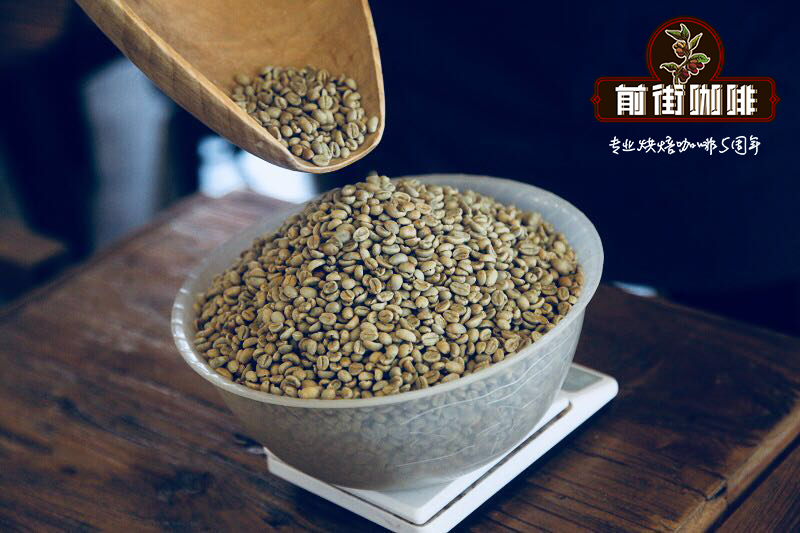Coffee roasting time and temperature on coffee beans, how to bake non-sour beans?

Professional coffee knowledge exchange more coffee bean information please follow the coffee workshop (Wechat official account cafe_style)
The taste of coffee, that is, the range and quality of sour and bitter taste, the intensity and quality of aroma, astringency, thick thickness and some defects in the taste, is the "quality" of raw beans. Roasting is the right way to grasp the possibility of all kinds of raw beans: to what extent can you have the best taste? To what extent can it kill the flavor? However, superb baking technology can not turn Brazilian beans into Colombian beans, and low-quality tastes such as fermented, moldy and smelly beans become the taste of normal beans. Baking is not a panacea, it can only adjust the taste within the range of properties that raw beans already have. The most difficult part of baking is the best time to stop baking. If you don't stop baking at the best time, it will certainly affect the flavor of coffee beans. In principle, the baking time at high temperature is short and that at low temperature is long.
Baking time and temperature
1. Flood baking time
The commonly used baked beans in the cup are shallow baked beans, which is better for 8-12 minutes when baking. Shallow baked beans can fully capture the different aroma, acidity and unpleasant taste of beans, and can correctly evaluate the quality grade of beans. Light roasting to moderate roasting to produce chlorogenic acid lactones is "pleasant" bitterness, deep baking chlorogenic acid lactones is reduced, the formation of high content of vinyl catechol polymer is "unpleasant" bitterness, which is similar to the bitterness of espresso, so the appropriate baking degree can reduce the unpleasant taste. The key points in the roasting process of raw coffee beans are as follows: 3 minutes to feel the "grass smell", 5 minutes to feel the "hay flavor", 6 minutes to feel the "toast flavor", and 8 minutes to feel the "coffee flavor".
The raw beans are dehydrated in the furnace for 4-5 minutes, and the dehydration reaction occurs when the moisture content of the raw beans is low, resulting in chlorogenic acid lactone; when the moisture content of the raw beans is high, the reaction occurs to produce quinic acid and caffeic acid, and continue to heat caffeic acid to vinyl catechol polymer. Before the end of the first burst, the beans have a strong sour and astringent taste, which is not palatable to taste. About 2 minutes from the beginning to the end of the first burst (each bean will last for 2 minutes), there are soft beans in the pot that begin to burst. There are also beans that are not easy to expand until 2 minutes later. "the time difference between two and two minutes after two minutes is uneven." The time from the first burst to the second burst is 2 minutes, and the second time is about 2 minutes from the beginning of the burst (deep roasting in the city) to the end (French roasting). However, if the raw beans are of average size, large and thick, and equal water content, the simultaneous bursting of coffee beans will only end with a "snap". Coffee beans are mature, soft and can fully expand; beans are not mature enough, have much water content, and are not easy to expand.
The time for roasted coffee to burst for the first time is too short (less than 5 minutes), chlorogenic acid and trigonelline are not degraded enough, beans are not fully dehydrated, the temperature of beans has risen, and the chlorogenic acid lactone that is not easy to produce will become quinic acid and caffeic acid instead. Increase the sour and bitter of coffee. The bitterness of coffee contents changes slowly during baking, and the browning reaction during roasting promotes the production and release of more bitter substances by chlorogenic acid. Caffeine accounts for only 10% of the bitter ingredients, while the rest are chlorogenic acid and brown pigment. The core substance that causes the bitterness of coffee is chlorogenic acid, which produces chlorogenic acid lactone and vinyl catechol polymer produced by caffeic acid. Caffeic acid and quinic acid are the decomposition products of chlorogenic acid produced by baking. The sour taste of shallow roasted coffee beans is obvious, and the bitter taste of deep roasted coffee beans is obvious. Prolong the starting time of the first burst, which is called "steaming". Steaming mainly adjusts the baking speed, which helps to remove the astringent taste and the stinging taste of new beans, and adjusts the effect of bad taste. Steam baking pays attention to the fact that the temperature cannot drop. Too low temperature results in insufficient color and aroma.
Second, the temperature of the roaster
The working temperature of different roasters is different, and the temperature of inverted beans into the oven and the shutdown temperature at the end of baking are also different for different coffee roasters, see the instructions for details. For example, when the furnace temperature rises to 160190 ℃, the sample beans are poured into the roaster for roasting, and the best baking time is 8-12 minutes. When the baking is finished, turn the temperature to zero and open the throttle to turn off the power when the temperature of the baking furnace is naturally reduced to 50 ℃.
Baking time and temperature
Third, the color of baked beans
The sour, sweet, bitter and salty of coffee is closely related to the roasting chromaticity. 70% of the roasted coffee beans are 72% of the fiber insoluble in water, and the water-soluble flavor ingredients account for only 28% of the weight of cooked beans. The "sour and sweet" taste of shallow baking has the lowest molecular weight and high water solubility, and dissolves in the first half of the extraction, while the "bitter and salty" taste has high molecular weight and low water solubility, and dissolves in the second half of the extraction. If there are too many defective beans or improper baking, there will be a bitter taste in shallow baking. Baking technology is good deep baking is "thick but not bitter, mellow moisturizing throat". The bitterness, sour and salty taste of black coffee can easily interfere with the sweetness and do not feel as sweet as honey when drinking coffee. Only the cell wall of raw beans is thick, and the content of sucrose and amino acids is higher than the average, coupled with perfect roasting, sweetness can stand out, sweetness is the most valuable taste of fine coffee.
The color of baked beans is an important index, different raw beans, their baking time may be different, but the final color after baking is the same, so different taste can be determined according to the color of baked beans. In the actual baking operation, the main thing is to observe the color and stop baking as long as the color is appropriate.
The baking chromaticity can adjust the sour and bitter taste of beans. The baking chromaticity in the best baking time range is different, and the taste is also very different. In the process of baking, the color of the beans in the furnace gradually changes from green to dark. Pay close attention to the color changes of the beans when you "burst" (the first time you hear the beans burst in the furnace), and stop baking when the color of the baked beans is close to the standard chromaticity. The SCAA colorimetric card value of shallow baked beans is # 55 or # 65; the Nestle Simao purchasing station uses the 120CTN reading of the colorimeter as the standard chromaticity, the chromaticity range of roasted coffee powder is 117-123CTN, the value is small, the color is dark, and the value is large, the color stack is large. The ripeness of sun-dried beans is better than that of mechanically dried beans and has the property of baking evenly.
Important Notice :
前街咖啡 FrontStreet Coffee has moved to new addredd:
FrontStreet Coffee Address: 315,Donghua East Road,GuangZhou
Tel:020 38364473
- Prev

Coffee flavor and taste of Shumawa Coffee Manor in Costa Rica.
Professional coffee knowledge exchange more coffee bean information please follow the coffee workshop (Wechat official account cafe_style) Costa Rica's seven main coffee producing areas are distributed from northwest to southeast along with the inland central plateau. The fertile volcanic ash, mild and suitable temperature, and stable and abundant rainfall in Costa Rican volcanic terrain are all factors that make coffee a major agricultural product in Costa Rica.
- Next

What is individual coffee? How to taste a cup of coffee?
Professional coffee knowledge exchange more information about coffee beans Please follow the coffee workshop (Wechat official account cafe_style). Speaking of coffee, for many people. Latte, macchiato, cappuccino, these Italian fancy coffee is almost everyone's first understanding of coffee. We don't comment on the pros and cons of Starbucks espresso, but it does enlighten many people about coffee.
Related
- Beginners will see the "Coffee pull flower" guide!
- What is the difference between ice blog purified milk and ordinary milk coffee?
- Why is the Philippines the largest producer of crops in Liberia?
- For coffee extraction, should the fine powder be retained?
- How does extracted espresso fill pressed powder? How much strength does it take to press the powder?
- How to make jasmine cold extract coffee? Is the jasmine + latte good?
- Will this little toy really make the coffee taste better? How does Lily Drip affect coffee extraction?
- Will the action of slapping the filter cup also affect coffee extraction?
- What's the difference between powder-to-water ratio and powder-to-liquid ratio?
- What is the Ethiopian local species? What does it have to do with Heirloom native species?

